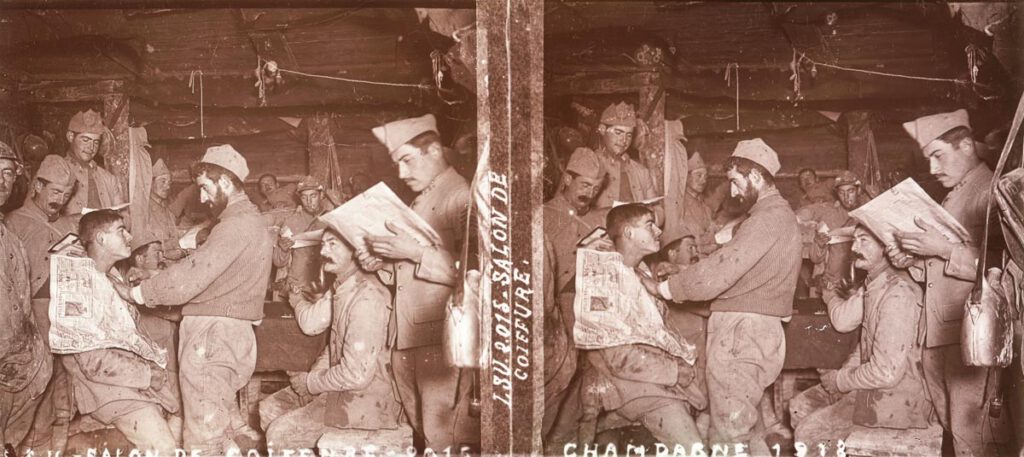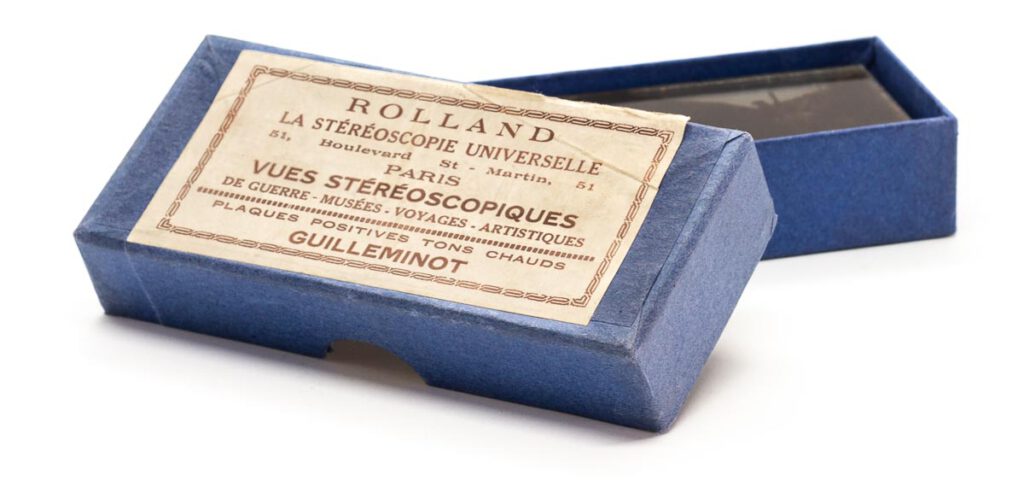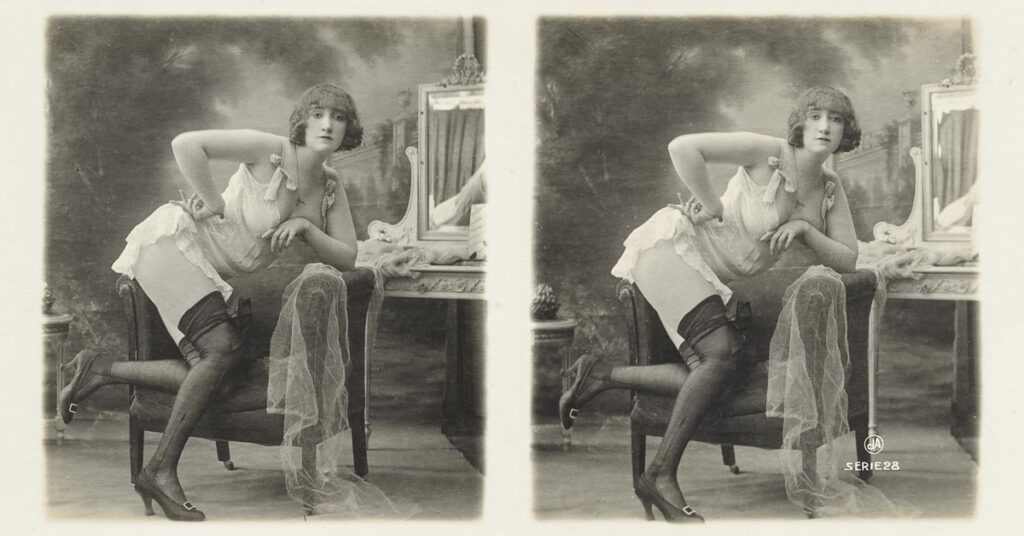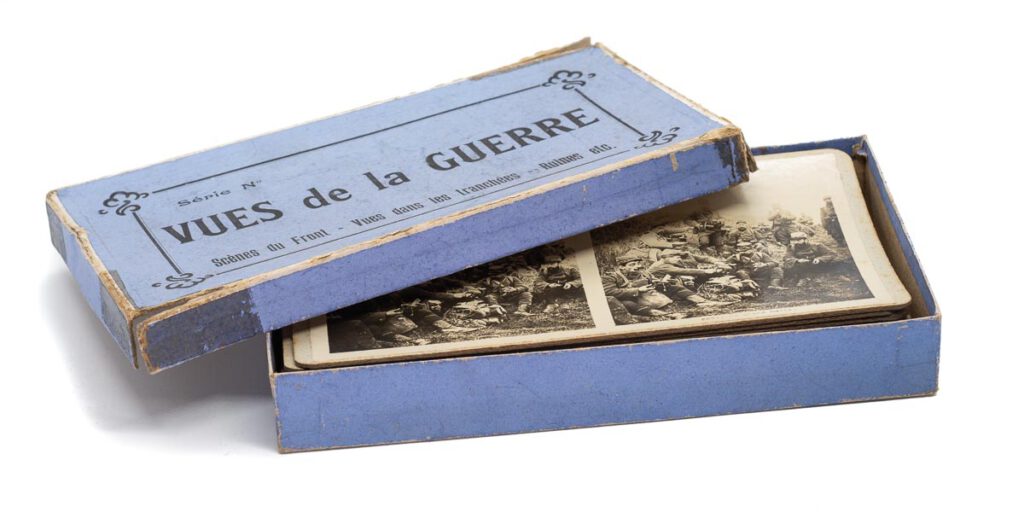Collecting Stereoviews
written for the stereosite by André Ruiter, The Netherlands
This is the first post of a two-part series about collecting stereoscopy antiques. This post is about collecting stereoviews. In the next part I will deal with collecting stereoscopes. My experiences are based on two years of searching and bidding on glass stereoviews of the First World War, but in general these tips apply to all themes.
What to collect?
Stereo photography was big business between 1850 and 1930. The volumes of glass and paper stereoviews offered today are still very large. To start collecting, it’s good to think about a strategy, or you may be overwhelmed by the huge offerings and end up with a large collection of stereoviews that you may not enjoy in the end. Think big, but start small!
I started with collecting glass stereoviews from the Battle of Verdun in France. I worked on a photo project about the battle and searched for stereoviews of the places which I visited during my project. I learned what worked and didn’t work for me and started slowly expanding my collection with new themes.
Where to search?
While it can be very satisfying to find a nice collection at the flea market, this post is about collecting stereoviews on the many online auction sites. eBay is by far the best-known and largest auction site with a large range of stereoviews available. However, there are more sites. Catawiki is popular in Europe, just like Delcampe, which mainly focuses on collectors. In addition, there are more specialised antique sites such as The Saleroom and Invaluable, where also renowned auction houses offer their items.
How to search?
Sometimes it can help to know a bit about the historic background of the desired stereoviews. For example, the search term “glass stereoviews war” already gives a lot of results but if you know that most glass stereoviews of the First World War were produced and sold in France, it’s better to search for the French words “plaque verre guerre”.
You can use the standard search engine on eBay, but I recommend Picclick. This search engine searches on Amazon and eBay and is much more powerful and shows related items. I’ve found many items that I probably would not have found by the default search engine of eBay.
Lots or individual stereoviews?
Stereoviews are offered both in lots and individually. The cost per stereoview in a lot is generally lower and your collection will grow faster. Also, you will be more surprised by what you’ve acquired because the seller probably hasn’t scanned all stereoviews. The downside of bidding on lots is that as your collection grows, you’ll get duplicates. In that case, bidding on individual slides can be interesting. You can do your “cherry picking”.
How much?
The cost per stereoview depends mainly on the theme and rarity. For a 45x107mm stereoview of the First World War, I pay an average of $3 in a lot and $5 for individual slides. A 6x13cm slide has an average price of $6 in a lot and $8 for an individual slide.
However, the boudoir photos from Jules Richard’s Atrium collection have an average price of $40 each and are usually not offered in a lot. 8,5x17cm glass stereoviews of Ferrier & Soulier are sold for about $80 each, although I still haven’t figured out what a fair price is for these slides. A stereo Daguerreotype starts with $400 but the really interesting ones are offered from $1000 or more.
Personally I think glass stereoviews give the best viewing experience, but of course it’s also possible to collect paper stereocards. They are generally cheaper and in a lot you can sometimes get them for $ 0.25 each.
So you’ll have to gain some experience for the theme that interests you. I suggest to follow some auctions (without bidding) and see what the winning bid is. You’ll soon get a feeling with realistic prices.
How to bid?
My advice is to enter a maximum bid that you’re happy with. The auction site will automatically bid for you as long as your maximum bid is higher than that of your competitors. When you win, you can be sure that you have the item for a satisfying price. If you let yourself carry away in a “bidding war”, you’ll always pay too much.
You can deviate from this strategy if you are convinced that an item is rare and you absolutely want it, but you don’t know exactly what the value is. Maybe you’ll pay too much but that’s ok, as long as you’re happy with it.
Especially on eBay you may experience that buyers sometimes surpass your highest bid in the last seconds so you’ll no longer be able to submit a higher bid. It can be frustrating if you have been the highest bidder for days but the item is “stolen” from you in the last seconds. Unfortunately this is how it works and you’ll have to deal with it.
Make offer
Items are also offered with a fixed price, but the seller allows you to make an offer. My advice is to offer no more than 20% below the price. Of course you can make a cheeky offer of 50%, but chances are high that the seller rejects your offer and may be insulted and no longer wants to do business with you. If you have bought items from the same seller before, you may want to go a bit further by negotiating a discount.
Just ask
Even if a seller uses fixed prices and does not offer an option for making an offer, you can still try by sending a message to the seller. Perhaps an item has been offered for a long time and the seller accepts a lower bid in the end. You can also ask for a best price if you buy multiple items.
Sometimes items are only offered in the seller’s own country and they don’t do international shipping. Just send a message and maybe the seller might consider shipping to you. Just ask politely and what can help is to address the seller in his/her own language. Google Translate is your best friend.
Be patient
Most stereoviews are not rare and sometimes you just have to be patient. If the price is too high, just wait until the item is offered again. I myself was once involved in a “bidding war” with another bidder for a specific stereoview. I ended up winning the stereoview with a $70 bid, which of course was way too expensive. A week later, the same stereoview was offered again and I could have bought it for just $5.
Beware of extra costs
When bidding, take the extra costs into account. Most of the time you’ll have to deal with shipping costs, but there is more. At eBay, the costs to the platform are for the seller. On Catawiki it’s for the buyer and the costs are 9% of the winning bid. The extra costs of traditional auction houses can easily be 30% of the winning bid!
Also beware from which country the seller ships your item. I buy most items in Europe and don’t have to deal with import duties. When I buy items in the United States I have to take into account that I’ll be paying tax and administration costs when the items enter The Netherlands. What first seemed a bargain can easily become too expensive.
Good luck with your collecting endeavours, and if you ever want advice, feel free to contact me!
André Ruiter (Putten, The Netherlands)
I’m a Dutch photographer who specializes in conceptual black & white photography. My photo projects are based on historic themes.
While working on a project about the First World War battlefield of Verdun in France, I discovered French glass stereoviews. This resulted in my great interest in stereo photography and I am now a passionate collector of French and German stereoscopy antiques from 1850 to 1930.
On my website I share my black & white photography and blogs about stereoscopy history and my collection.
Website: www.andreruiter.nl
Instagram-profile: andreruiter
Facebook-profile: andreruiterphotography





